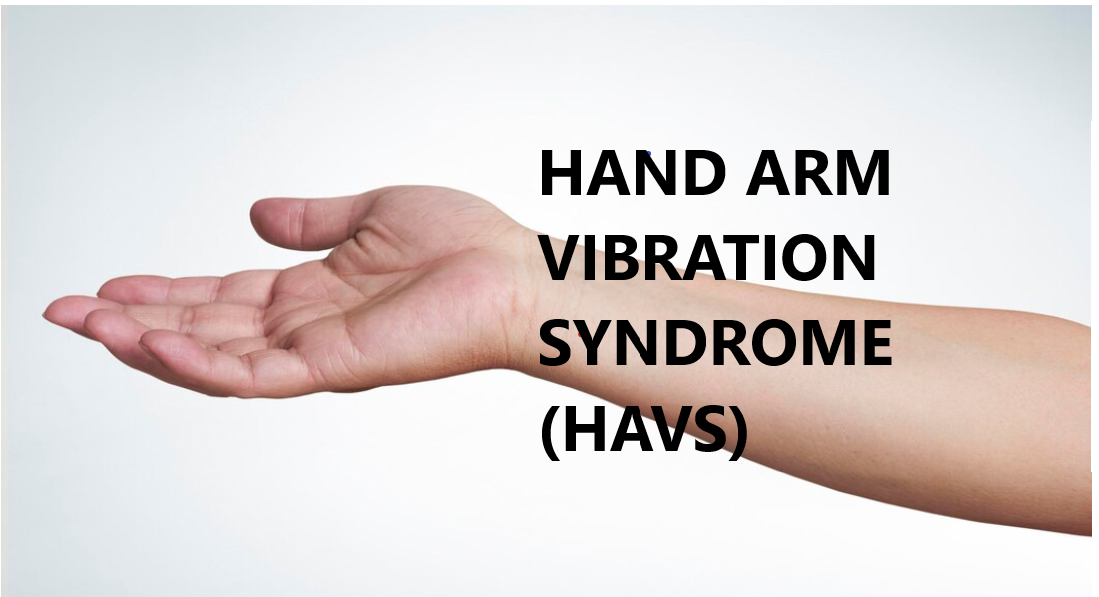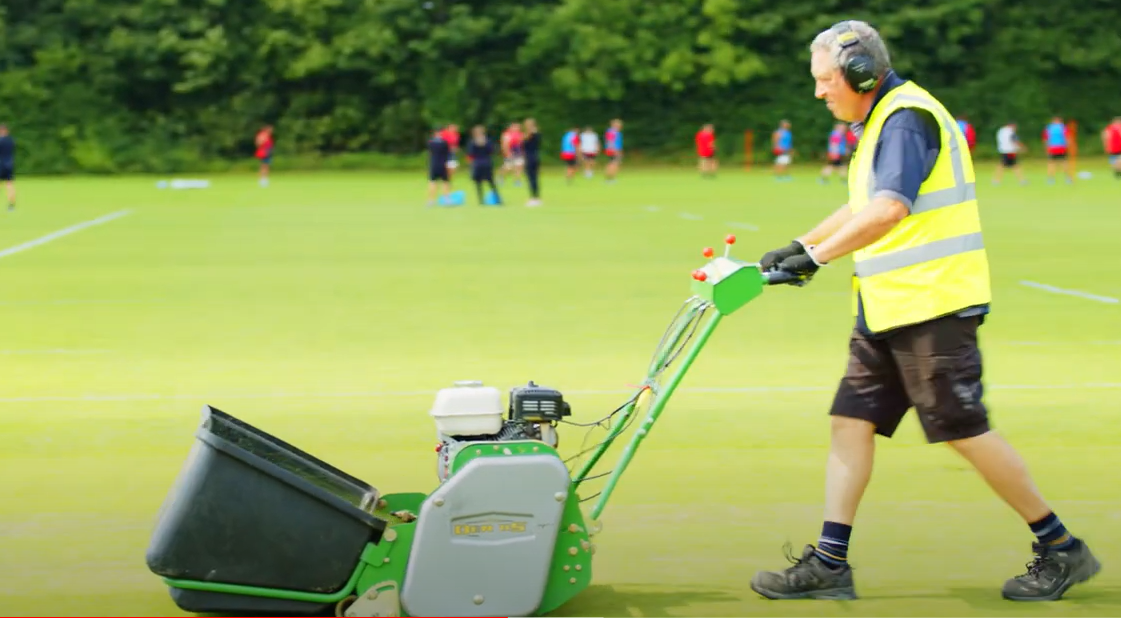HAND ARM VIBRATION SYNDROME (HAVS)
What is HAVS?
Hand-Arm Vibration Syndrome (HAVS) can be described as “the collective term for all symptoms that are the result of vibration damages that may occur in the fingers, hands, and arms during repetitive work with vibrating tools or machinery”. These injuries are divided into three subgroups:
- Neurological - nerve damage disorders (such as carpel tunnel syndrome)
- Vascular - blood vessel injuries (such as vibration white finger)
- Musculoskeletal injuries (such as muscular pain, arthritis or tendinitis).
Note: HAVS should not be confused with Whole Body Vibration (WBV). While similar, the cause and effect are different - see WBV help page here.
How is HAVS caused and what could be the result?
Simply put, HAVS is caused by the prolonged and frequent use of handheld vibrating tools/equipment such as grinders, grass strimmers and trimmers, chainsaws, sanders, impact hammers and even poorly maintained or old pedestrian mowers.
The vibration or frequent, repeated impact on the hands and fingers causes damage to the nervous system and/or localised blood circulation system. Harm can also be caused to muscles and bones, especially joints. Injuries can result in irreparable harm.
What are the symptoms?
The symptom displayed will largely depend on the type and extent of damage caused by the activity:
- Neurological Symptoms: The early stage of HAVS symptoms may include numbness, tingling in the tips of one or more fingers. This can then affect the whole finger. If severe it can become difficult to do fine tasks like holding small objects with your fingers, like screws or nails etc.
- Vascular symptoms: White Finger Symptoms – Vibration White Finger (Raynaud’s phenomenon) symptoms are triggered by cold weather or touching cold objects. While dealing with a heavy and vibrating tools/machinery, fingers can turn white then blue and then red.
- Musculoskeletal pains: As symptoms become severe, muscles, joints and bones start aching along with pain in the hands and lower arm. This can also weaken your hand grip.
As symptoms develop further, numbness and/or pain can become permanent leading to muscle weakness and wasting. HAVS can be debilitating and irreversible.
Note: There is no cure for HAVS, only prevention.
How to protect you and your grounds management team from hand-arm vibration.
It is worth noting occasional and/or infrequent low exposure is unlikely to cause ill health, however you must assess the risk to you and your grounds management team, only then can you decide on the best course of action.
Risk Assessment
A risk assessment for HAVS will follow the common principles of risk assessment.
- Identify who can be harmed and how – where vibration may occur and who might be affected.
- Assess the likelihood and severity of harm – estimate the extent of exposure to vibration (a guide to risk assessment can be found here.
- The use of a HAV meter may be required to accurately measure the vibration exposure.
- Put in place controls – identify what needs to be done to reduce the likelihood of harm. This should include identifying those workers who need health surveillance.
- Record you risk assessment – write it down.
- Review your risk assessment – if someone contracts HAVS or a near miss (someone spotted using vibration tools without controls in place but has not developed HAVS symptoms) is suspected, if you change working equipment or if the law changes it is best practice to review your risk assessment. Periodically re-visit your risk assessment to ensure all remains relevant.
Risk reduction methods
The work environment, tools/machinery used, tasks undertaken and working practices will dictate the best tactics for you to use. These may include:
- Eliminate the hazard – use an alternative method of work, can you contract the work out?
- Reduce the exposure and severity of vibration i.e. stagger tool/machine use, restrict the exposure time, take regular breaks, purchase low vibration tools, service tools regularly, balancing mower blades, two stroke strimmers are suitably fuelled.
- Isolate – use remotely operated tools.
- Control – through managerial tactics i.e. reduce exposure time, conduct the task less frequently. Keep the hands warm, stay dry and wear non-restrictive clothing.
- Personal Protective Equipment (PPE) – Special PPE is available that can reduce the amount of vibration transferred to the hand.
- PPE should only be used if all other controls prove to be insufficient. Note: to be effective these must be the correct gloves for the particular resonant frequencies the work is exposed to and must be used correctly (it is recommended you get professional advice).
More information can be found here.
Health surveillance
The importance of health surveillance as a preventative control measure must not be underestimated. The need for health surveillance will be highlighted by your risk assessment, however if you are not sure it is recommended you get a competent person to measure the exposure levels. More information can be found here.
If you have volunteers a simple initial screening tool can be useful see Annex A.
Health surveillance will deliver a systematic programme of checks aimed at providing early warning of any symptoms of disease and will also trigger any actions required to prevent its progression. Health surveillance can also be useful to assess if your existing control measures are working or not.
A HAVS exposure calculator can be downloaded from here.
Annex A
INITIAL SCREENING QUESTIONNAIRE FOR THOSE USING HANDHELD VIBRATING TOOLS and/or HAND-GUIDED VIBRATING MACHINES
|
|
|
Yes |
No |
|
1 |
Do you have any tingling of the fingers lasting more than 20 minutes after using vibrating equipment? |
|
|
|
2 |
Do you have tingling of the fingers at any other time? |
|
|
|
3 |
Do you wake at night with pain, tingling, or numbness in your hand or wrist? |
|
|
|
4 |
Do one or more of your fingers go numb more than 20 minutes after using vibrating equipment? |
|
|
|
5 |
Have your fingers gone white* on cold exposure? *Whiteness means a clear discoloration of the fingers with a sharp edge, usually followed by a red flush. |
|
|
|
6 |
If Yes to 5, do you have difficulty rewarming them when leaving the cold? |
|
|
|
7 |
Do your fingers go white at any other time? |
|
|
|
8 |
Are you experiencing any other problems with the muscles or joints of the hands or arms? |
|
|
|
9 |
Do you have difficulty picking up very small objects, eg screws or buttons or opening tight jars? |
|
|
|
10 |
Have you ever had a neck, arm or hand injury or operation? |
|
|
|
11 |
Have you ever had any serious diseases of joints, skin, nerves, heart or blood vessels? |
|
|
|
12 |
Are you on any long-term medication that may affect blood circulation? |
|
|
If yes to any of the above, it is recommended that you cease the use of vibrating tools and consult your GP od occupational health professional for further advice.



 Tweet
Tweet